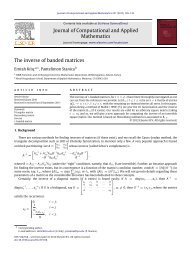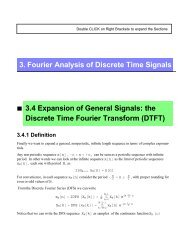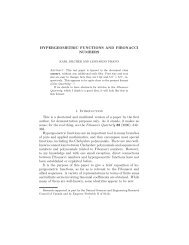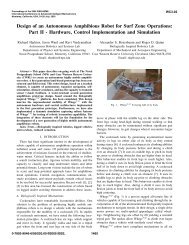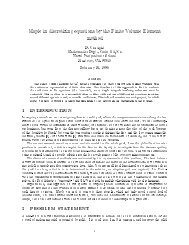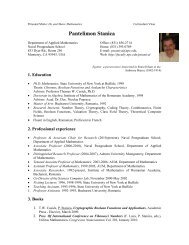A View of Cyberterrorism Five Years Later
A View of Cyberterrorism Five Years Later
A View of Cyberterrorism Five Years Later
You also want an ePaper? Increase the reach of your titles
YUMPU automatically turns print PDFs into web optimized ePapers that Google loves.
generally facilitate their activities. And, like other bad actors on the Internet, they use the net to<br />
inflict harm. Yet from this seemingly normal usage, the very practice <strong>of</strong> terrorism is being<br />
transformed. This transformation takes the form more <strong>of</strong> an expansion <strong>of</strong> options and activities<br />
rather than a replacement <strong>of</strong> traditional ways <strong>of</strong> operating. The changes are perhaps most<br />
pronounced in the al-Qa‟ida movement.<br />
The following sections discuss six areas <strong>of</strong> terrorism practice that have been substantially<br />
altered by the Internet, especially the Web: media operations, attacks, recruitment, learning,<br />
finance, and security. The paper concludes with a section on counterterrorism strategies that<br />
exploit terrorists‟ use <strong>of</strong> the Internet.<br />
Media Operations<br />
After seizing the Japanese embassy in Lima, Peru on December 17, 1996, the Movimiento<br />
Revolucionario Tüpac Amaru (MRTA or Tüpac Amaru) launched a new era in terrorist media<br />
operations. By the following morning, the group had a website up and running out <strong>of</strong> Germany.<br />
The site had over 100 pages, which were updated using a laptop computer and satellite<br />
telephone uplink. Mainstream media, including the New York Times, received their information<br />
about the incident from the terrorist‟s website (Regan, 1999). During the initial hours <strong>of</strong> the<br />
conflict, the terrorists effectively owned the information environment relating to their operation.<br />
MRTA‟s use <strong>of</strong> the Web represented a strategic innovation in terrorism. For the first time,<br />
terrorists could bring their message to a world audience without mediation by the established<br />
press or interference by the government. Further, they could <strong>of</strong>fer news reports <strong>of</strong> world events<br />
that were favorable to their cause, thereby enhancing the propaganda value <strong>of</strong> their websites. In<br />
addition, they could use the Web to distribute information directly to their own members and<br />
supporters. The advantage the Web <strong>of</strong>fered was immeasurable and recognized by terrorist<br />
groups worldwide.<br />
2



